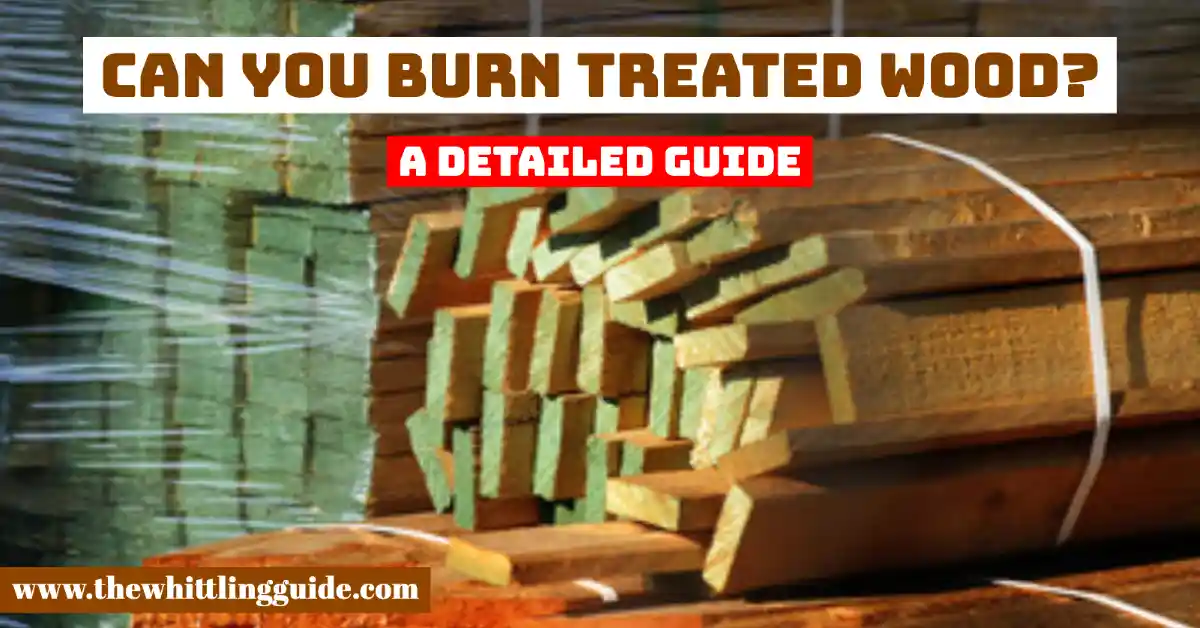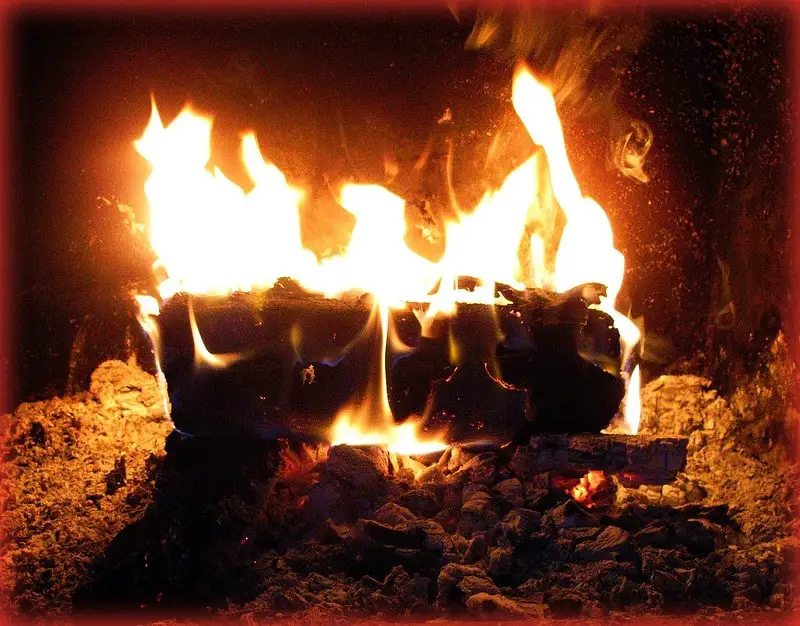
Can you burn treated wood? You have probably heard that you cannot burn treated wood. This is not true. You can burn treated wood if you take the proper precautions and safety measures. Here are some things you should consider:
- You can burn treated wood, but it should be treated with an epoxy or similar coating. Wood that is not treated has a higher chance of catching fire and burning.
- You must ensure that your wood has been treated with an epoxy or other appropriate coating.
- If you plan to burn treated wood, do not start the fire or burn the wood until you are prepared. Instead, use a fire extinguisher to stop any stray flames.
What is treated wood?
Pressure-treated wood is a construction material used for outdoor structures treated with chemicals for durability and protection against insects, high traffic, and harsh weather conditions. The wood structures made of pressure-treated wood include decks, tables, flower beds, and furniture.
The wood lasts up to five decades, and it is brown or OD green in color. It consists of half-inch-long splits on its surfaces. Those are the places of injection of the treatment.

To treat the lumber, one has to soak it in a liquid chemical or preservative and hold it in a pressure chamber. The preservatives used to treat the wood are Alkaline Copper Quaternary, Copper Azole, and Micronized Copper Azole. These chemicals penetrate deep inside the wood. That reduces rot and decay and makes it water-resistant.
Protective wear is a necessity when working on pressure-treated wood. That includes gloves, goggles, and a dust mask. However, it is made of renewable resources and requires less energy to produce. It has to be disposed of in a landfill for safety.
The environmental qualities that come with lumber consist of carbon footprint and low-energy production. The wood comes in three types: Borate, Alkaline Copper Quat, and rot-resistant treatments. You are allowed to paint pressure-treated wood structures, but that comes with complications. The paint tends to peel off.
Can you burn treated wood?
You can burn treated wood. You should not burn treated wood indoors or outdoors because it contains toxic chemicals. These chemicals are dangerous when inhaled. In addition, the smoke and ash are hazardous to health. Pressure-treated wood must be disposed of in a landfill so you will not mistakenly put it in a fire.
No matter how cold, you cannot use pressure-treated wood to feed your fire. It is even illegal in some states to burn pressure-treated wood. As you collect wood to burn, examine as you separate tread and non-treated wood.
The United States Environmental Protection Agency has condemned the burning of treated wood. Burning treated does not destroy arsenic and other chemicals it contains—residue from the burning wood counts. You do not get a warning from the deadly chemicals.
No odor or taste gives you signs of burnt, treated wood. Older treated wood is safe to burn since the chemicals would have dissipated after some decades. However, it is difficult to tell how old the wood is. That requires a professional or an experienced woodworker to tell.
What is creosote
Creosote is a carbonaceous chemical formed from burning wood. It is from the distillation of tar and material derived from the plant, such as wood and fossil fuel. It lingers in areas such as your chimney.

Creosotes make your material stable, and the types of creosote are coal-tar creosote and wood-tar creosote. Some creosote is a treatment of wood structures. For example, the samples from chimneys come as soot and smoke.
The coal-tar version contains more toxic properties and is a preservative of wood. Wood tar prevents ship damage, and oil tar is a variety of creosote made of oil shale and petroleum. It is made of pre-coal formations. According to the U.S Environmental Protection Agency, creosote is a pesticide used as a wood preservative.
Creosote should not be mixed with other chemicals. That meets the American Wood Protection Association Standards. The production of such a preservative has to be conducted under a license.
You are allowed to blend it with high-boiling petroleum oil. Creosote is destroyed by any treatment that contains chlorine or calcium hypochlorite. The formation of creosote is due to the incomplete combustion of the oils. That is a lack of adequate airflow.
The smoke rises in the chimney and cools. That causes water, carbon, and volatiles to condense on the interior surface of the chimney. The black oily residue is the creosote, and a thick accumulation causes a fire hazard. That means the creosote is removed regularly.
How to tell if the wood has creosote
Wood turns blackish if it has creosote. It has a look covered in a tar-like substance that is slippery. It also oozes out of the wood. If the wood is to rain and snow, it is tricky to determine if it has creosote or not.
Wood without creosote looks like standard wood with natural grain, open pores, and visible veins. Creosote produces a scent that you can smell. For example, what happens during summer when it is hot.
When the wood is exposed to direct sunlight, it smells like oil. There is a carcinogenic gas that comes from the wood. That is an acidic odor that results from tar and oil. The unpleasant smell is defined in hot temperatures. Wood with creosote requires protective wear and should not be burnt.
It causes skin irritation. Usage also tells if the wood has creosote. New wood rarely has creosote because there is no need to treat unused lumber. That is when appearance comes into play. Old wood materials have a high chance of containing creosote. Wood with creosote produces toxic fumes.
Why is it bad to burn treated wood
You cannot burn pressure-treated wood because the smoke and ash come with health and environmental hazards. Unfortunately, it affects a population of over 200 beings. In addition, a small board in pressure-treated timber.
Burning is a quick way of distributing toxic chemicals. A tablespoon of ash is lethal. The other pressure-treated wood name is CCA, representing Cooper, Chromium, and Arsenic. Arsenic is a chemical that has no taste or smell.
There is no safe way to burn pressure-treated wood. That means you get no warning when you have it. Your plants and flowers wither and die when exposed to the burning wood. If you have fish, they will not survive.
After burning pressure-treated wood, the pollutants will find their way into your lungs, which is dangerous. The effects may be long-term. It affects people, the environment, pets, and plants. In addition, it causes chronic respiratory diseases that few people can survive.
Since the process of recognizing treated wood is complex, do not just burn lying pieces of wood. If you are unsure, it is better to be safe than sorry. Disposing of it in a landfill is a noble idea that is safe.
Can you burn treated wood outside
Burning treated wood is not recommended. But you can burn treated timber outside. The fumes from the burning wood can harm your health. If you must burn treated wood, do so in a well-ventilated area. You can burn treated wood, but it should be treated with an epoxy or similar coating. Wood that is not treated has a higher chance of catching fire and burning.
How to tell if the wood is treated for burning
In general, it is not recommended to burn treated wood. Treated wood tends to be a dark green or brown color. The label should also say if the wood is treated. If you are unsure, ask a professional.
What happens if you burn pressure treated wood
Pressure treated wood is often used in construction. It is treated with chemicals to make it resistant to rot and pests. When pressure treated wood burns, these chemicals are released into the air. These chemicals can be harmful to your health. If you must burn pressure-treated wood, do so in a well-ventilated area.
Can you burn treated pine
Pine is treated with chemicals to make it resistant to rot and pests. When pine burns, these chemicals are released into the air. These chemicals can be harmful to your health when burning treated pine. If you must burn treated pine, do so in a well-ventilated area.
- Grain and Sheen: Teak Oil versus Danish Oil Uncovered - January 10, 2024
- The Cherry on Top: Crafting the Perfect Cutting Board - January 9, 2024
- Polyurethane Water-Based vs Oil-Based: Choosing the Right Finish - January 8, 2024